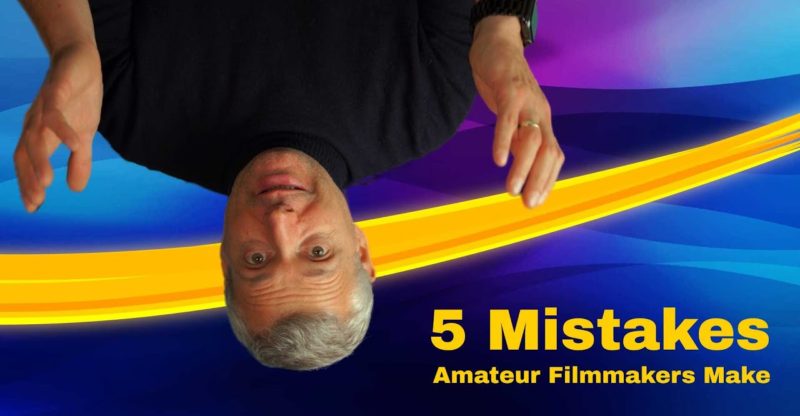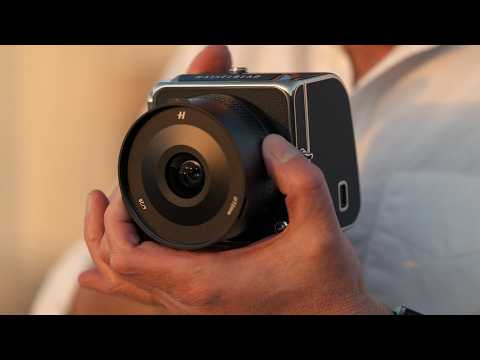5 Mistakes Amateur Filmmakers Make
<b>Hey, what's up? I'm Peter from Media65.</b> <b>You know that money doesn't</b> <b>really make the big difference</b> <b>anymore between a bad film and a good</b> <b>film. With a budget less</b> <b>than 1k, you can already</b> <b>achieve really professional results</b> <b>today.
So what is the</b> <b>main difference? Let me show</b> <b>you the five main mistakes that I have</b> <b>spotted when amateurs are filming.</b> <b>Today's smartphones easily rival the</b> <b>quality of good video</b> <b>cameras. And even affordable</b> <b>video cameras come with a quality that</b> <b>would not have been</b> <b>imaginable 20 or 25 years ago.</b> <b>And when it comes to video editing, video</b> <b>editing software today is</b> <b>affordable and sometimes</b> <b>even free of charge. So the real</b> <b>difference is you. Because</b> <b>it's your skill set, your</b> <b>creativity and your imagination that will</b> <b>make the difference</b> <b>between a good film or</b> <b>a bad film.
And here are the five</b> <b>mistakes that you should</b> <b>absolutely avoid if you don't</b> <b>want to completely ruin your films.</b> <b>Creating a video is not only putting</b> <b>together a couple of</b> <b>images, it's about telling a story</b> <b>and conveying a clear message.
And the</b> <b>story has to transport the</b> <b>message in the best way possible.</b> <b>Even short videos, they need to have some</b> <b>kind of a structure because</b> <b>otherwise they will never be</b> <b>perceived as what they should be.
The</b> <b>best way to inform or to</b> <b>entertain your audience.</b> <b>Ok, I agree.</b> <b>Filming is an art and it</b> <b>requires a lot of skills.</b> <b>There is no wonder actually why most of</b> <b>the people pass through film school.</b> <b>But nevertheless, even if you have never</b> <b>come close to any film</b> <b>school, there is no reason</b> <b>why you shouldn't</b> <b>respect also some basic rules.</b> <b>One of the most important</b> <b>rules is the rules of thirds.</b> <b>You have to respect this rule, especially</b> <b>if you have people in the frame.</b> <b>And then also work on</b> <b>your diagonals.</b> <b>And in general I can say get inspired by</b> <b>professional video</b> <b>productions and look how</b> <b>they compose the images.</b> <b>It's very interesting if you have a clear</b> <b>look at these video</b> <b>productions and you see</b> <b>how the image is composed that will open</b> <b>your eyes and will</b> <b>inspire you quite a lot for</b> <b>your own video productions.</b> <b>And then camera movements.</b> <b>That's quite an interesting topic because</b> <b>I see a lot of people there making camera</b> <b>movements left and right.</b> <b>They pan over an audience but without any</b> <b>clear target, any clear goal.</b> <b>And every camera movement that you have</b> <b>should clearly deliver also a message.</b> <b>Give every single camera</b> <b>movement really a purpose.</b> <b>That's something which is very important.</b> <b>And last but not</b> <b>least, please don't zoom in.</b> <b>Even if you have a video camera where you</b> <b>can zoom in and out.</b> <b>Have you ever seen any professional video</b> <b>production where the</b> <b>cameraman or the camerawoman</b> <b>has zoomed in or out?</b> <b>Obviously this is not the case.</b> <b>What professional camera people are</b> <b>doing, they're moving</b> <b>the camera towards or away</b> <b>from the subject itself.</b> <b>Be it on a dolly, be it on a gimbal or be</b> <b>it sometimes also handheld.</b> <b>So you should never try to zoom because</b> <b>right away it will make</b> <b>your film make really amateur</b> <b>like.</b> <b>So never zoom please.</b> <b>Let's speak about white</b> <b>balance and color temperature.</b> <b>It's very important that you get a deeper</b> <b>understanding of what</b> <b>color temperature means</b> <b>and how you set the white balance on your</b> <b>camera in best case manually.</b> <b>Of course, most of the cameras today come</b> <b>with a quite good</b> <b>automatic white balance.</b> <b>But nevertheless, this automatic white</b> <b>balance isn't flawless</b> <b>and it might not guarantee</b> <b>that not the different shots that you are</b> <b>taking will look</b> <b>different also in the post</b> <b>production and especially when you are</b> <b>panning it might be very</b> <b>well that the automatic white</b> <b>balance is during the shot itself</b> <b>changing the color</b> <b>temperature and that will definitely</b> <b>not look very good.</b> <b>So dive into this topic, make sure that</b> <b>at least when you are</b> <b>filming the white balance</b> <b>is locked while you are recording because</b> <b>otherwise you will</b> <b>find yourself with very</b> <b>very crappy results in worst case and you</b> <b>will spend a lot of</b> <b>time color grading these</b> <b>shots just to fix this problem that could</b> <b>be quite easily just</b> <b>avoided during the shooting.</b> <b>Bad sound.
Oh yeah, I made a whole vlog</b> <b>about the fact that today there is no</b> <b>excuse anymore for bad</b> <b>sound. First of all, good microphones,</b> <b>even good microphones, are</b> <b>today pretty much affordable.</b> <b>And even if your recording is not</b> <b>perfect, then today AI can</b> <b>help you to improve even poor</b> <b>recordings. But nevertheless, as good as</b> <b>AI is, just make sure that</b> <b>during the recording your</b> <b>sound is the best possible because what</b> <b>you don't have to fix in the mix will</b> <b>save you a lot of time</b> <b>afterwards.
And on the other side, I know</b> <b>it's maybe trendy to have</b> <b>the microphone in the hand</b> <b>and to run around with the microphone to</b> <b>record yourself. Maybe I'm</b> <b>a little bit old-fashioned,</b> <b>but I want to have the microphones as</b> <b>invisible as possible and especially I</b> <b>don't like it if you</b> <b>have any cable dangling around here.

So</b> <b>make sure that the microphone is</b> <b>invisible, that the cable</b> <b>is not showing and the sound quality is</b> <b>good. And that will</b> <b>definitely make you professional.</b> <b>Filming is only one part of the business.</b> <b>Equally important is the post-production,</b> <b>the editing.
And here I recommend that</b> <b>you definitely get</b> <b>inspired again by professional</b> <b>video productions. Look at them. Look how</b> <b>they structure the</b> <b>editing, how they structure the</b> <b>different scenes, what cuts are they</b> <b>using, what reason they are</b> <b>bringing into the film that they</b> <b>are editing.
That's very revealing and</b> <b>you can inspire yourself</b> <b>quite a lot on that. And then</b> <b>there's one word about transitions. If</b> <b>you inspire yourself by</b> <b>professional video productions,</b> <b>you will discover one thing that I have</b> <b>learned quite early on in</b> <b>my career.
They usually don't</b> <b>use any fancy transitions. There is not</b> <b>even sometimes dissolves</b> <b>in there but just hard cuts.</b> <b>If your film doesn't work with hard cuts,</b> <b>then you made some</b> <b>fundamental mistakes during the</b> <b>filming. If you want to use transitions,</b> <b>then please use them on a</b> <b>purpose and very clearly</b> <b>to convey a certain message or to</b> <b>structure your film in the best way</b> <b>possible.
And then another</b> <b>word about music. You will use music of</b> <b>course to underline certain</b> <b>aspects of your video. And</b> <b>it's a good idea also to edit the video,</b> <b>to make the cuts in</b> <b>accordance with the sound itself. Be</b> <b>it on the rhythm, be it on the mood, you</b> <b>need to feel the music and</b> <b>then you edit and cut your</b> <b>video also according to the music. That</b> <b>will make a huge difference between a</b> <b>film which is poorly</b> <b>edited on the music or a film which is</b> <b>well done edited on the right music.</b> <b>Producing videos is not rocket science.</b> <b>It requires skills that can be acquired.</b> <b>All the gear you might partly have</b> <b>already or you can acquire it also for</b> <b>very little money anymore.
So there is no</b> <b>excuse anymore for producing videos in a</b> <b>high quality. The only thing that you</b> <b>need to have is the willingness to do it,</b> <b>to learn new things, get inspired by</b> <b>professional video productions and then</b> <b>do it and do it again and again rinse,</b> <b>repeat, learn, rinse,</b> <b>repeat, learn and so on</b> <b>until you feel, "Oh now I'm becoming</b> <b>better." That's how</b> <b>you should do it and I</b> <b>know that you can do it.</b>













